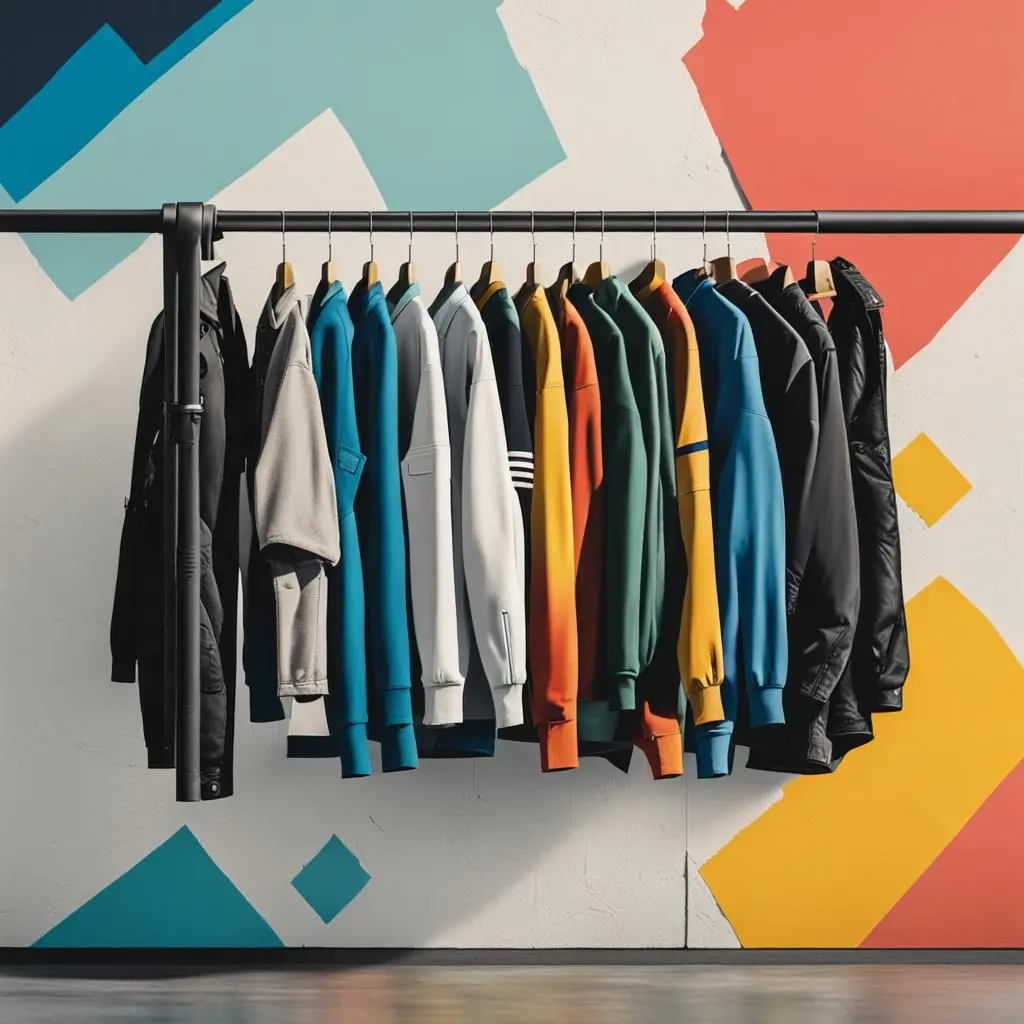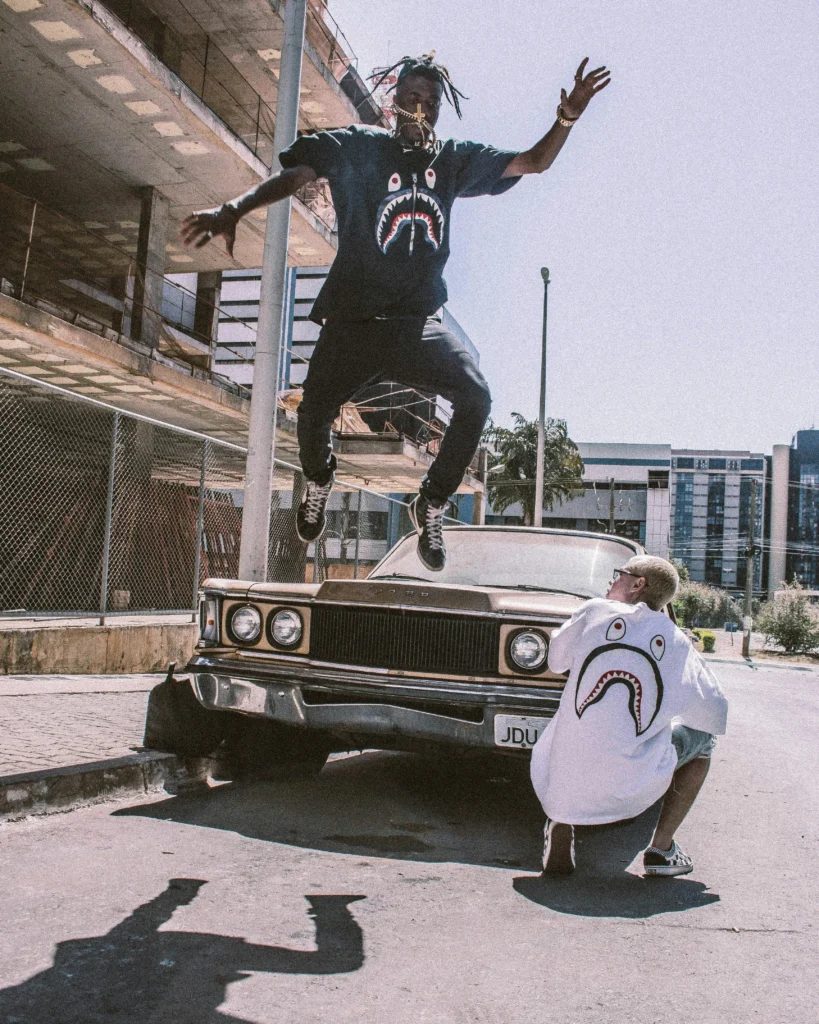The Evolution of Streetwear: From Subculture to Global Phenomenon
Introduction
One of the earliest influences on streetwear can be traced back to the 1970s and 1980s, when hip-hop culture emerged in the Bronx, New York. This subculture not only revolutionized music but also fashion. Rappers like Run-D.M.C. and groups like N.W.A. popularized a style that was characterized by baggy jeans, oversized t-shirts, and sneakers. This laid the foundation for the urban streetwear aesthetic that we see today. In the 1990s, streetwear took another leap forward with the rise of skateboarding culture. Skateboarders needed clothing that was comfortable, durable, and allowed for freedom of movement. Brands like Stüssy and Supreme emerged during this time, catering to the needs of skaters and eventually gaining popularity among a wider audience. Their designs often featured bold graphics, logos, and a rebellious attitude that resonated with the youth. The turn of the millennium saw streetwear make its way into mainstream fashion, thanks in part to the influence of celebrities and musicians. Kanye West, for example, played a significant role in bridging the gap between streetwear and high fashion. Through collaborations with brands like Nike and Louis Vuitton, he brought streetwear to a whole new level of recognition and acceptance. Today, streetwear has become a global phenomenon, with brands like Off-White, BAPE, and Palace leading the way. These brands continue to push boundaries and challenge traditional fashion norms. Streetwear has evolved beyond just a fashion trend; it has become a lifestyle and a form of self-expression for many. The history of streetwear is a testament to the power of subcultures and their ability to shape mainstream culture. What started as a movement on the streets has now become an influential force in the fashion industry. Streetwear has blurred the lines between high fashion and street style, creating a space where creativity and individuality thrive. Whether it’s through collaborations, limited-edition releases, or the use of innovative materials, streetwear continues to evolve and captivate audiences around the world.

The Birth of Streetwear
Streetwear is a fashion movement that emerged in the 1980s and has since become a global phenomenon. It originated from the streets and skate parks of California and New York, where young people began to rebel against the traditional fashion norms and express their individuality through their clothing.
In the early days, streetwear was heavily influenced by the skateboarding and hip-hop cultures. Skaters and hip-hop artists were known for their baggy jeans, oversized t-shirts, and sneakers, which soon became the signature look of streetwear. The DIY (do-it-yourself) ethos was also a significant part of the movement, with many streetwear enthusiasts customizing their clothes with graffiti, patches, and other personal touches.
One of the key figures in the birth of streetwear was Shawn Stussy, who started selling surfboards with his own hand-drawn logo in the late 1970s. The logo, which consisted of his last name in a distinctive graffiti-style font, became iconic and soon appeared on t-shirts and other apparel. Stussy’s brand became synonymous with streetwear and laid the foundation for many other streetwear brands to come.
The Evolution of Streetwear
Over the years, streetwear has evolved and expanded its influence beyond skateboarding and hip-hop. It has become a major force in the fashion industry, with high-end designers incorporating streetwear elements into their collections and collaborations between streetwear brands and luxury fashion houses becoming increasingly common.
One of the defining moments in the evolution of streetwear was the rise of sneaker culture. Sneakers, once seen as purely functional footwear, became a symbol of status and style. Limited-edition collaborations between sneaker brands and streetwear labels created a frenzy among collectors and enthusiasts, with people lining up for hours or even days to get their hands on the latest release.
Another significant development in streetwear was the emergence of online communities and social media platforms. Streetwear enthusiasts now have the ability to connect with like-minded individuals from around the world, share their style, and discover new brands and trends. This has democratized the fashion industry to some extent, allowing smaller streetwear brands to gain exposure and reach a global audience.
The Journey So Far
Streetwear has come a long way since its humble beginnings on the streets of California and New York. It has transcended its subculture roots and become a mainstream fashion movement embraced by people of all ages and backgrounds.
Today, streetwear is characterized by its fusion of high and low culture, blending elements of luxury fashion with casual and athletic wear. It is no longer limited to t-shirts and sneakers but encompasses a wide range of garments, accessories, and even home goods.
Streetwear has also become a platform for self-expression and social commentary. Many streetwear brands use their designs to convey messages about politics, social issues, and popular culture. This has resonated with consumers who want their clothing to reflect their values and beliefs.
Looking ahead, the future of streetwear is bright. It continues to evolve and push boundaries, constantly reinventing itself and challenging the status quo. With the rise of sustainability and ethical fashion, we can expect to see more streetwear brands embracing these principles and incorporating them into their designs.
In conclusion, the birth of streetwear marked a significant shift in the fashion industry. It gave rise to a movement that celebrates individuality, creativity, and self-expression. From its origins on the streets of California and New York, streetwear has grown into a global phenomenon that continues to shape and influence the world of fashion.

Casual and Comfortable Aesthetic
At its core, streetwear was about creating a unique identity and sense of belonging. It was characterized by its casual and comfortable aesthetic, drawing inspiration from skateboarding, hip-hop, and graffiti culture. Baggy jeans, oversized t-shirts, hoodies, and sneakers became the uniform of choice for streetwear enthusiasts.
Mainstream Recognition and Collaboration
As the popularity of streetwear grew, it began to attract attention from the mainstream fashion industry. High-end designers started incorporating streetwear elements into their collections, blurring the lines between luxury and street fashion. This crossover between high fashion and streetwear gave rise to collaborations and limited-edition releases that created a sense of exclusivity and hype.
Influence in Music and Entertainment
Streetwear also found its way into the music industry, with artists like Run-D.M.C and Kanye West becoming influential figures in shaping the streetwear aesthetic. Their endorsement of brands like Adidas and Nike helped propel streetwear into the mainstream, making it accessible to a wider audience.
Impact of Social Media
In recent years, streetwear has reached new heights of popularity, thanks in part to social media and the rise of streetwear influencers. Platforms like Instagram have allowed streetwear enthusiasts to showcase their personal style and connect with like-minded individuals from around the world.
Global Phenomenon
Today, streetwear has become a global phenomenon, with dedicated streetwear stores, fashion labels, and even streetwear-focused fashion weeks. It has transcended its subcultural origins and has become a dominant force in the fashion industry.
Mainstreaming and Integration with Luxury Fashion
With the increasing popularity of streetwear, high-end fashion brands began to take notice and incorporate streetwear elements into their collections. Luxury brands like Gucci, Balenciaga, and Off-White started collaborating with streetwear labels and incorporating streetwear aesthetics into their designs. This fusion of high fashion and streetwear created a new wave of style that appealed to a wider audience.
Influence in Sports and Entertainment
Streetwear also made its mark in the world of sports. Athletes started embracing streetwear as a way to express their individuality and personal style. NBA players like Russell Westbrook and James Harden became known for their bold fashion choices off the court, often seen wearing streetwear brands and pushing the boundaries of traditional sports attire.
Impact on Popular Culture
The rise of streetwear in pop culture has also had a significant impact on the economy. Streetwear brands that were once niche and underground have now become multi-million-dollar businesses. Limited-edition releases and collaborations often sell out within minutes, creating a sense of exclusivity and scarcity that drives up demand.

Future Trends and Challenges
One of the key factors that will shape the future of streetwear is the rise of technology. With the advent of social media and e-commerce platforms, streetwear brands have gained unprecedented access to a global audience. This has allowed them to reach consumers in ways that were previously unimaginable.
Furthermore, technology has also influenced the design and production processes of streetwear. 3D printing, for example, has opened up new possibilities for creating intricate and unique garments. Virtual reality and augmented reality have also been utilized to create immersive shopping experiences, allowing consumers to virtually try on clothes and accessories before making a purchase.
Another trend that is expected to have a significant impact on the future of streetwear is the blurring of gender boundaries. Traditional notions of gender and fashion are being challenged, and streetwear is at the forefront of this movement. Gender-neutral designs and inclusive sizing are becoming more prevalent, reflecting a shift towards a more inclusive and diverse fashion industry.
Moreover, streetwear is no longer confined to the streets. Luxury fashion houses have taken notice of the cultural significance and popularity of streetwear and have started to incorporate elements of it into their collections. This fusion of high fashion and streetwear has resulted in a new wave of luxury streetwear, blurring the lines between the two.
In conclusion, the future of streetwear is bright and full of possibilities. With its ability to adapt, collaborate, and push boundaries, streetwear will continue to be a driving force in the fashion industry. As sustainability, technology, inclusivity, and luxury converge, streetwear will evolve and redefine what it means to be fashionable in the 21st century.

